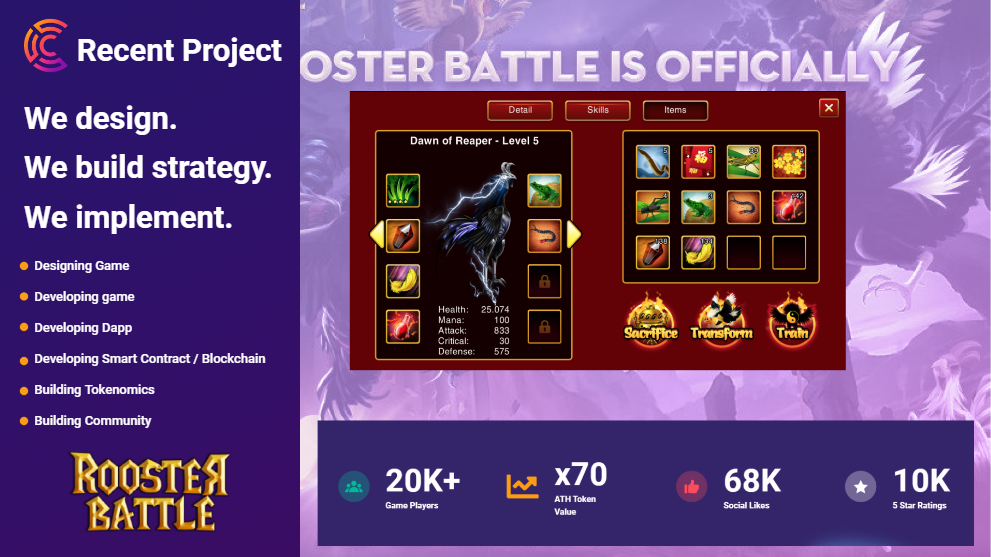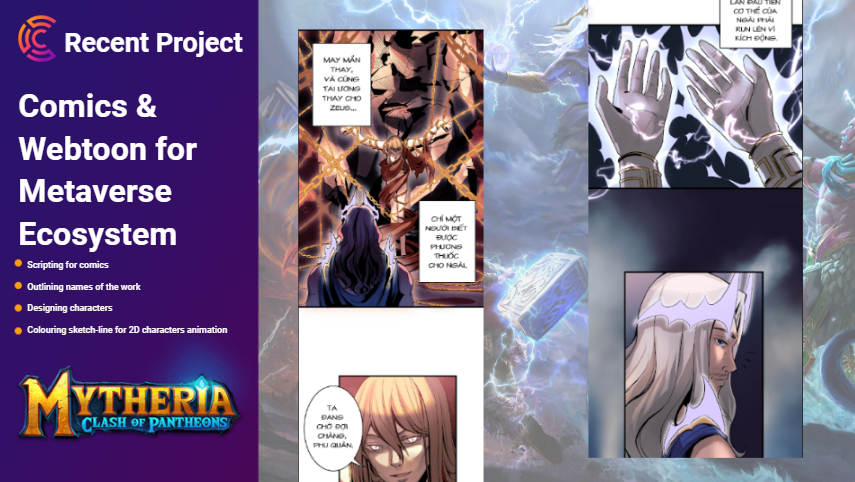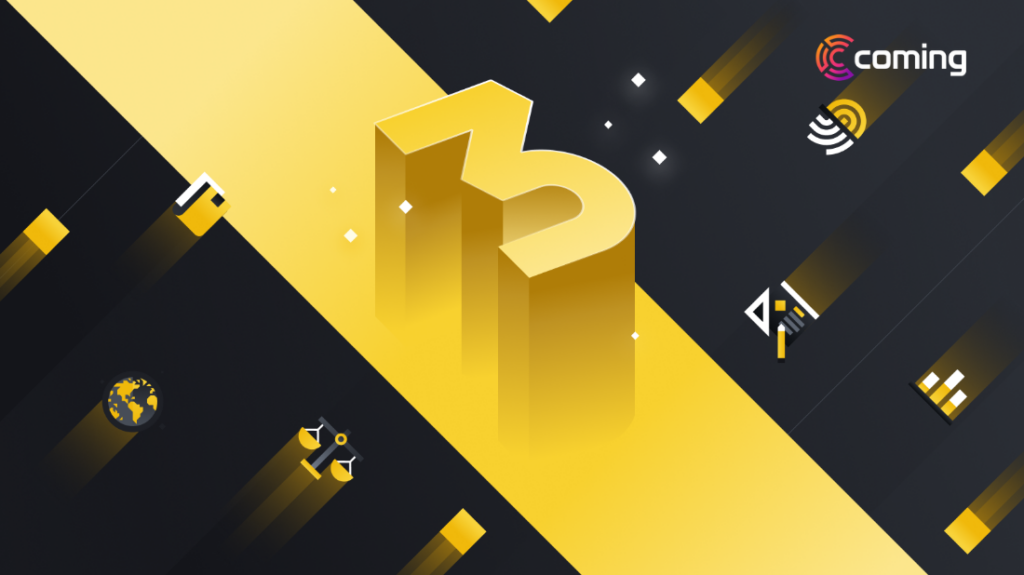What is Web3 and Blockchain?
An overview of Web3:
Web3 is a term used to describe the development of the current web, creating a decentralized web using technologies such as blockchain, cryptocurrency, decentralized applications, and security technologies to provide a new online experience for users.With Web3, data and applications are not in the hands of centralized organizations but are stored on decentralized networks and verified by decentralized protocols. Web3 is built on blockchain technologies such as Ethereum, Polkadot, Solana, Cosmos, etc., to ensure the authenticity and integrity of data and transactions.Web3 also enables the creation of global, interactive, and secure decentralized applications (DApps) and smart contract systems, allowing users to exchange directly and securely without intermediaries. Decentralized applications also allow users to fully control their data and interact with other applications through blockchains and decentralized protocols.Some characteristics of Web3 include:
- Decentralization: Web3 networks operate without any centralized control, meaning that no agency or organization can control or interfere with the system.
- Blockchain: Web3 relies on blockchain networks to store data and provide data integrity and transaction authenticity.
- Decentralized applications (DApps): Web3 enables the creation of DApps, allowing users to exchange directly and securely without intermediaries.
- Cryptocurrency: Web3 plays an important role in promoting the use of various cryptocurrencies, allowing currency transactions between parties without intermediaries.
- Security: Web3 provides security features such as data encryption and transactions verified by digital signatures, helping to protect users’ information and assets.
- Interactivity: Web3 enables applications to interact with each other, creating more complex and comprehensive systems than traditional applications.
An overview of Blockchain:
Blockchain is a decentralized technology used to store and manage online information and transactions securely and transparently. It was created by a group of people or an individual under the pseudonym Satoshi Nakamoto in 2008 to support cryptocurrency bitcoin.Blockchain works as a distributed database, where transactions are stored in blocks linked together by cryptography. Each block contains a certain number of transactions and has a unique identifier. The first block in the chain is called the genesis block, and subsequent blocks are added through a consensus mechanism, such as proof-of-work or proof-of-stake.Blockchain provides data integrity, transparency, and security by decentralizing information and transactions, making them tamper-proof and immutable. This technology has the potential to revolutionize various industries and transform the way we store and manage data and transactions online.

Blockchain has the following key features:
- Decentralization: Blockchain does not belong to any individual or organization, but is a decentralized network distributed across many different nodes. Each node in the network holds a copy of the entire block chain, and all nodes must agree with each other to add a new block to the chain.
- Security: Blockchain uses encryption and digital signatures to protect information and transactions on the network. Each block in the chain is linked to each other by a unique identifier, and to change any information in a block, an attacker would have to change all blocks related to that block.
- Transparency: All transactions stored on the blockchain are public and accessible by anyone. This helps increase transparency and reliability of the system.
- Authentication and Verification: Blockchain uses encryption and digital signatures to authenticate and verify transactions on the network. All transactions must be verified by multiple nodes in the network before being added to the block chain.
- Peer-to-Peer Interaction: Blockchain allows parties to interact directly with each other, without the need for intermediaries. This helps reduce the cost and time of transactions, while increasing their security and transparency.
Therefore, Web3 and Blockchain are both decentralized technology networks, optimizing user experience in the era of technology 4.0.
The correlation between Web3 and Blockchain
Web3 and blockchain are always two concepts associated with each other in the technology field. Web3 is a new web model, where applications are built on the blockchain platform to increase security, reliability, and decentralization. Blockchain is a distributed technology, where transactions are stored on a network of multiple nodes, ensuring safety and transparency for transactions.Web3 uses blockchain as a means to achieve greater decentralization, security, and reliability. Web3 applications allow users to interact directly with each other through transactions performed on the blockchain network. For example, DeFi (Decentralized Finance) applications built on the Ethereum blockchain platform allow users to borrow and lend money without the need for intermediaries, creating peer-to-peer interaction between parties.Therefore, it can be said that blockchain is part of the Web3 infrastructure. Web3 not only uses blockchain, but also uses many other technologies such as AI, IoT, and machine learning to improve user experience and increase interaction between parties in applications.Web3 and blockchain are closely related to each other in many aspects, including:
Decentralization and centralization
Blockchain is considered a decentralized technology, where transactions are stored on multiple nodes and there is no single intermediary controlling them. Web3 uses blockchain as a means to achieve higher decentralization, security, and reliability.
Security
Blockchain is designed to ensure the security of transactions through encryption and a distributed network. Web3 uses the security of blockchain to ensure the safety of user applications and data.
Transparency
Blockchain ensures the transparency of transactions by storing them on a distributed network, making it easy for users to verify and monitor transactions. Web3 uses the transparency of blockchain to ensure transparency in applications.
Interaction
Web3 is designed to increase interaction between parties in applications through the use of blockchain. Blockchain allows transactions to be made directly between parties without the need for third-party intervention, creating a more direct and secure interaction environment.
Application
Web3 is a platform for decentralized applications, where blockchain is used as a means to ensure higher decentralization and security. Web3 applications can meet many different user needs, including decentralized finance (DeFi), education, certification, and monitoring.
Convenience
Web3 creates a convenient environment for users by using direct transactions between parties without the need for third-party intervention. The use of blockchain also helps reduce the complexity of traditional processes.
Applications of Web3 and Blockchain in Business
Web3 and blockchain have many useful applications in business. Not limited to any specific field, they have a great impact on many fields and bring more benefits to people, as well as improve business efficiency. One of the areas where Web3 and Blockchain have the greatest impact is Gaming, Virtual Real Estate, and Advertising.
Web3 and Blockchain in the Gaming Industry – Entertainment
The applications of Web3 and blockchain in the gaming industry include integrating blockchain to create decentralized games that allow players to own virtual assets and trade them directly with each other without intermediaries. Integrating cryptocurrencies to pay for game features, while allowing players to earn real money through playing games. Moreover, the creation of digital systems helps develop diverse decentralized games, along with the supply of creative and innovative content.For Coming.io, this is a rapidly growing field of development. Coming.io acts as innovators, bringing web3 and blockchain in this field closer to users, providing the best experiences for them.

Web3 and Blockchain in Virtual Real Estate
Applications of web3 and blockchain in virtual real estate include using blockchain to store information about virtual real estate and manage virtual real estate transactions. Creating virtual real estate auction systems to allow users to bid on virtual land parcels and value virtual assets. Integrating cryptocurrencies for payment in virtual real estate transactions.
Web3 and Blockchain in Advertising
Applications of web3 and blockchain in advertising include creating decentralized advertising systems to allow advertising directly to target customers. Using blockchain to create more transparent and reliable advertising systems, as well as preventing fraudulent advertising behavior. Finally, blockchain applications can also allow users to be paid directly for participating in advertising campaigns or providing data.

Web3 and Blockchain in Art, Painting, and Entertainment
As human needs increase, art and entertainment also need to develop their potential. Especially in the digital age, when everything is connected with technology, it is extremely necessary to bring artworks to Web3. At Coming.io, we always focus on developing this field with the motto of providing users with everything they need with the best experience. Therefore, many projects in the field of art, painting have been born. Typical examples include Callicrypto project, … In addition, there is also a strong development of 3D Animation, Artwork, Comics Webton, …
What Challenges for Web3 and Blockchain?
The explosive birth of Web3 and Blockchain has been a springboard for businesses to develop strengths through technology. Not only that, technology in general and Web3 Blockchain in particular is gradually supporting, replacing humans in many activities. We cannot deny the benefits it brings, but web3 and blockchain still have to face major challenges. Overcoming these challenges, web3 blockchain will breakthrough and become an indispensable ally for humans.First, in terms of privacy, although blockchain has high security, the information on blockchain is public and can not be changed. This can cause privacy issues for users.Secondly, the complexity of blockchain technology is also a concern. Implementing and using blockchain requires expertise and deep knowledge of technology, which can make it challenging to apply to small projects. Thirdly, transaction latency and the slow speed of blockchain are also issues. Confirming transactions on the blockchain can take time and require multiple verifications, which can create obstacles for using blockchain in real-time financial services. Finally, environmental concerns also arise when using blockchain. The process of mining and verifying transactions on the blockchain requires a significant amount of energy, which can have negative impacts on the environment. In summary, web3 and blockchain offer significant potential for technology and the economy, but there are also limitations that need to be addressed to ensure sustainable development of this technology.
The Development Potential of Web 3 and Blockchain
Web 3 and blockchain are two technologies that are considered potential game-changers in how we use the internet and manage data. Web 3 is seen as the next version of the web, where user experience is focused on controlling their own data rather than having companies and organizations control it. Web 3 also introduces the concept of “dApps” (decentralized applications), where applications are built on the blockchain platform and operate completely independently of any organization. On the blockchain side, it is considered the foundational technology for Web 3. Blockchain is a hierarchical and distributed system, where transactions are stored on multiple network nodes. This ensures that data stored on the blockchain is secure, tamper-proof, and maintains data integrity. With the combination of Web 3 and blockchain, we can see a lot of development potential in areas such as finance, healthcare, education, and many other fields. For example, blockchain can be used to address security and privacy issues in the healthcare industry, while Web 3 can empower user data control and introduce new applications that have never existed before.
Conclusion
Blockchain is considered the foundational technology for Web 3. Blockchain is a hierarchical and distributed system, where transactions are stored on multiple network nodes. This ensures that data stored on the blockchain is secure, tamper-proof, and maintains data integrity. With the combination of Web 3 and blockchain, we can see a lot of development potential in areas such as finance, healthcare, education, and many other fields. For your business to thrive, gradually applying Web 3 Blockchain technology into your processes and products is crucial. And Coming.io is always ready to provide advice and support for you in applying blockchain technology to help your business grow.

